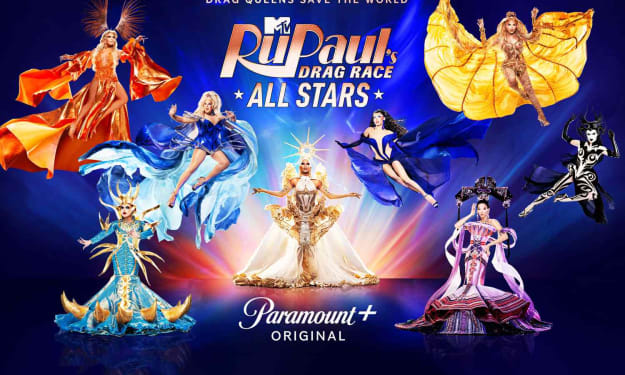The difference between new comic books era and silver age era
Over the decades, these sequential art manuscripts have experienced significant transformations, marking distinct eras in comic book history. While each era holds its unique charm, this article aims to delve into the differences between the groundbreaking Silver Age era and the modern New Comic Books era.

Comic books have long been a cherished form of entertainment, captivating audiences with remarkable storytelling, vibrant artwork, and larger-than-life characters. Over the decades, these sequential art manuscripts have experienced significant transformations, marking distinct eras in comic book history. While each era holds its unique charm, this article aims to delve into the differences between the groundbreaking Silver Age era and the modern New Comic Books era.
A Glimpse into the Silver Age Era:
The Silver Age era emerged in the late 1950s and lasted until the early 1970s, during which the comic book industry experienced a revival after a period of decline following World War II. Breaking away from the more simplistic narratives of the Golden Age era that preceded it, the Silver Age introduced intricate storylines, imaginative concepts, and complex characterizations.
One of the notable features of the Silver Age era was the resurgence of superheroes, led by DC Comics' reimagined Flash, Green Lantern, and the iconic revitalization of the superhero archetype, Superman. With a renewed focus on science fiction, these comics introduced a new sense of wonder, blending mundane reality with fantastical elements.
Unlike their Golden Age predecessors, Silver Age comic books were characterized by realistic, dynamic, and highly detailed artwork, often attributed to exceptional artists like Carmine Infantino, Gil Kane, and Curt Swan. Their captivating illustrations vividly brought to life the grandeur and excitement of these stories, captivating readers in a visually stunning world.
The Birth of the New Comic Books Era:
Fast forward to the present, the New Comic Books era has arrived, embracing the ever-changing landscape of modern society, diverse readership, and technological advancements. With the rise of digital platforms, social media, and the influence of pop culture, comics have found new avenues to explore, attracting a broader audience than ever before.
The New Comic Books era thrives on innovation, pushing boundaries with experimental storytelling techniques, thought-provoking themes, and multidimensional characters. In contrast to the more conventional narratives of the Silver Age, modern comic books have embraced greater diversity, highlighting underrepresented voices, and tackling complex social issues that resonate with a diverse readership.
Moreover, the advancement of digital technology has expanded the possibilities of comic book creation and distribution. Digital platforms have granted artists and writers more creative freedom, enabling them to experiment with multimedia elements such as motion graphics, interactive panels, and animated features, resulting in a more immersive and engaging reader experience.
Shifting Artistic Approaches:
While the Silver Age was known for its exceptional artwork, the New Comic Books era has witnessed a shift toward diverse artistic styles, embracing a broader spectrum of aesthetics. Artists such as Fiona Staples, Esad Ribic, and Skottie Young have made significant contributions, showcasing their unique visual storytelling capabilities. From hyper-realistic illustrations to stylized and abstracted forms, the New Comic Books era celebrates artistic diversity, fostering a sense of freshness in the medium.
Furthermore, advancements in coloring techniques have played a crucial role in defining the visual aesthetics of modern comic books. Computer-based coloring methods, applied to both traditional and digital artwork, have revolutionized the presentation of comic book narratives, enhancing mood, atmosphere, and intensity. Brilliant color schemes, intricate shading, and detailed textures all contribute to the immersive experience, often underscoring the emotional aspects of a story.
Narrative Structures and Themes:
While the Silver Age commonly presented standalone stories within fixed narratives, the New Comic Books era has embraced more diverse narrative structures and storytelling techniques. Graphic novels, mini-series, and crossovers have become vital components of the contemporary comic book industry, introducing readers to overarching story arcs that span multiple issues, forming intricate interconnected universes.
Moreover, the themes explored in modern comic books reflect the complexities of the contemporary world. From exploring social justice issues to psychological exploration, the New Comic Books era delves deep into the human condition, forcing readers to question societal norms and explore the boundaries of morality. It is this broader introspection that lends modern comics a sense of gravitas, making them more than mere escapist entertainment but rather thought-provoking mediums for exploring real-life complexities.
As comic book enthusiasts, we are fortunate to have witnessed the evolution of the medium and the distinct eras that have shaped it. While the Silver Age era introduced us to vibrant superheroes and captivating storylines, the New Comic Books era brings with it an exploration of broader themes, artistic experimentation, and diverse narratives that resonate with modern society.
The differences between the two eras highlight the evolution of comics as both an art form and a social commentary apparatus. With boundless creativity and a rapidly changing world, comic books continue to evolve, embracing innovation, and pushing the boundaries of storytelling, ensuring that this beloved medium retains its relevance for generations to come.
About the Creator
Amanda Freughler
Dutch-born with a German upbringing, I am a culturally-inquisitive individual driven by a voracious appetite for knowledge and diversity. I channel my passion into exploring and understanding various facets of culture.






Comments
There are no comments for this story
Be the first to respond and start the conversation.